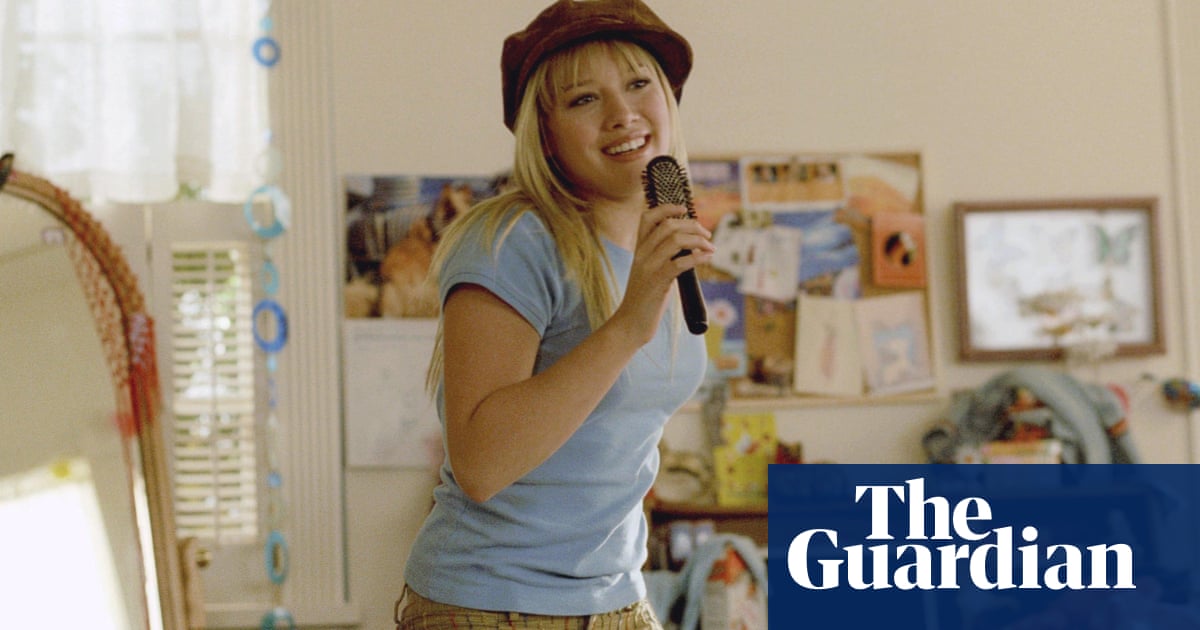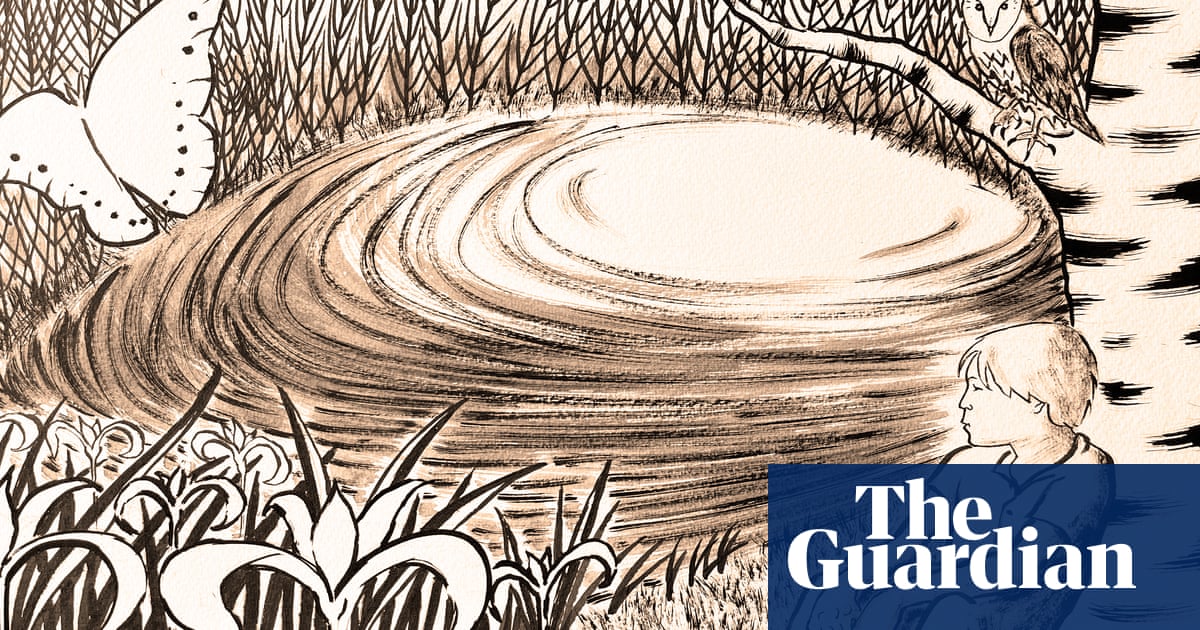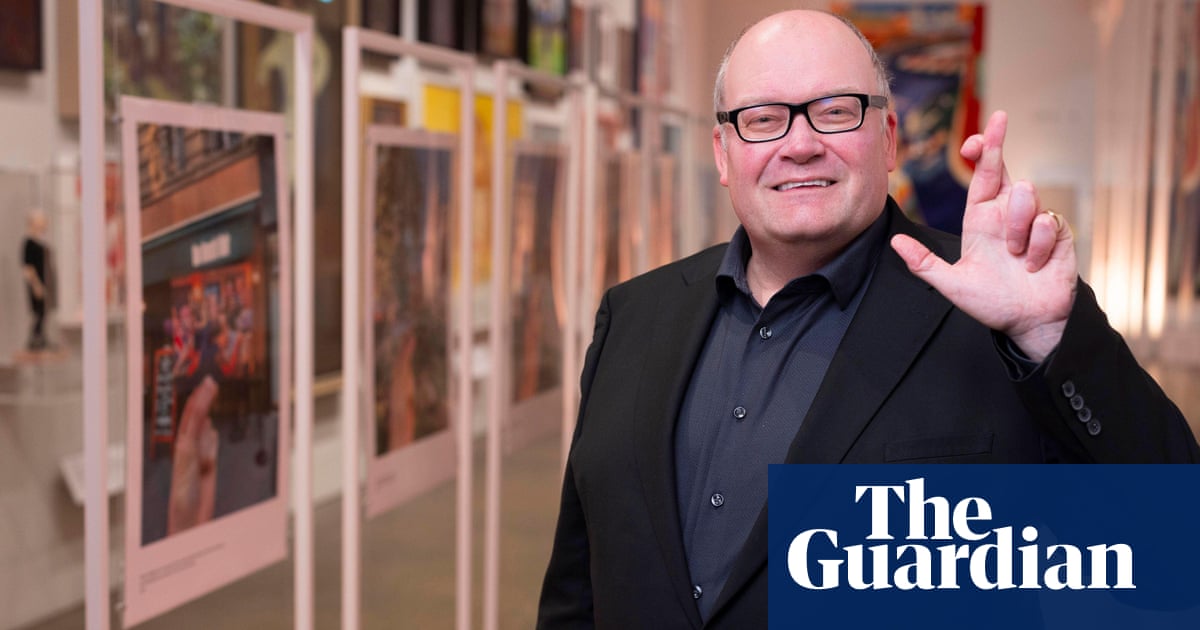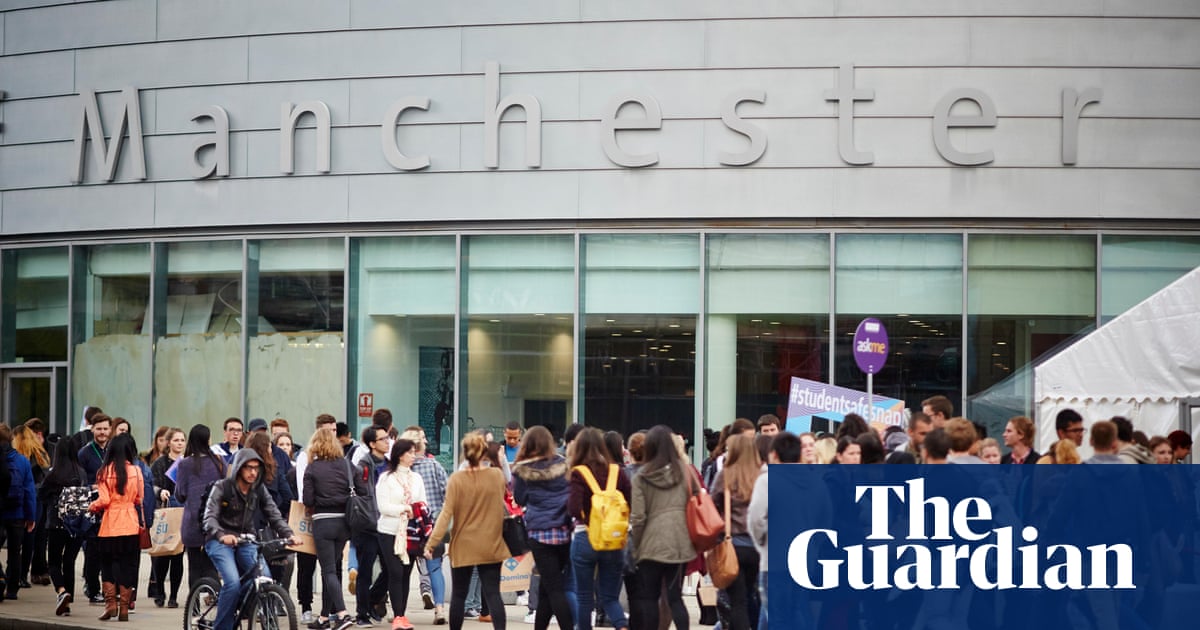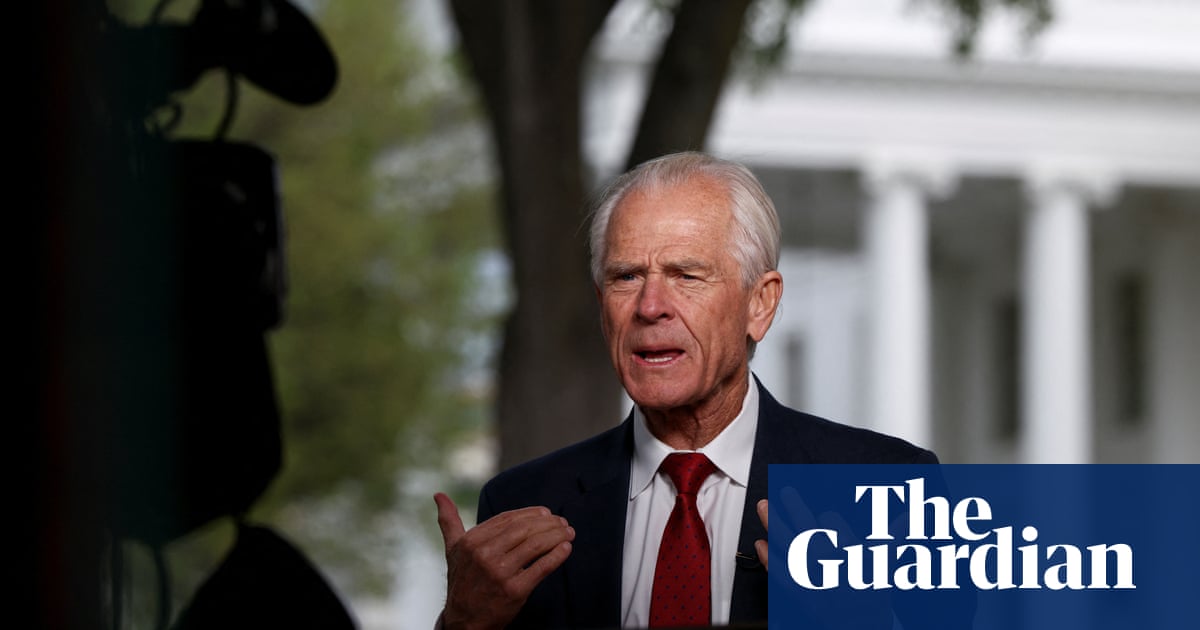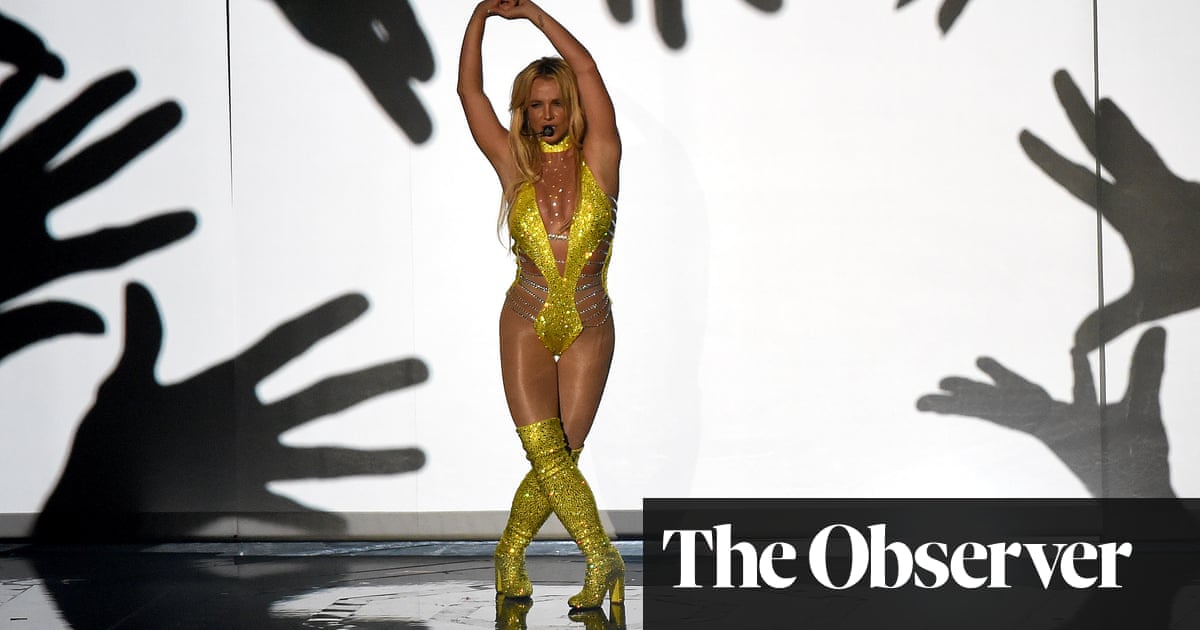I am not even inside the building but a creeping sense of foreboding has already set in. As I try to find the entrance to Nikolaj Kunsthal, a gothic-style former church in Copenhagen, I hear the lamenting strings of Wagner’s Tristan und Isolde – the soundtrack to Lars von Trier’s 2011 end-of-the-world film Melancholia. Inside, I take a seat in a tent-like structure, similar to the one in the film, and watch as a planet hurtles towards Earth, Wagner still blasting away. Nearby lies a long table, covered in white linen and laid out for the celebration of a lifetime – but clearly abandoned midway, and now adorned with dead flowers and burnt-out candelabras.
Upstairs, black and white projections – a ticking clock, trains moving through postwar Germany, scenes of sex and drowning – play as the ominous male voice that features in Von Trier’s 1991 film Europa does a countdown. “On every breath you take, you go deeper,” he says. “On the mental count of 10, you will be in Europa.”
With the world still reeling from the arrival of Trump 2.0, and Europe at war amid increasing polarisation, looming AI takeover and the escalating climate emergency, the experience feels strangely current, even though it is intended to take viewers back to the visual world of the notorious Danish film-maker, and immerse them in it.
“It is almost a new paradigm,” says Helene Nyborg Bay, artistic director of this arts venue, as she takes me round Breaking Darkness, the Von Trier exhibition she has curated. “We had this belief in one united country or the United Nations after the second world war. Now we see there are new thoughts coming through, unfortunately. Lars von Trier shows some of these.”

But in other very important ways, Von Trier is deeply irrelevant in 2025. As well as attracting criticism for the treatment of women in his films, he has been involved in multiple scandals. In 2011, while promoting Melancholia, he told the world’s press at the Cannes film festival that he was a Nazi and “understood” Adolf Hitler, after which he was banned. He later apologised, saying: “I am not antisemitic or racially prejudiced in any way, nor am I a Nazi.” Six years later, amid the rise of the #MeToo movement, musician and actor Björk, who starred in his 2000 musical film Dancer in the Dark, said he sexually harassed her during its making, claims he has denied.
But despite this, the exhibition has attracted unprecedented interest, with record numbers at the opening – 2,000 in three hours – including younger generations. Why? “Lars von Trier is such a strong film-maker with such a strong aesthetic sense that he could be a visual artist,” says Bay who, despite the controversies, believes that Von Trier’s work and its themes – love and despair, good and evil, faith and human choice – have a lot to offer contemporary audiences. “We live in new times,” she says. “On the other hand – he might have been ahead of his.”
Personally, this longtime Von Trier fan says she “was never offended by his way of looking at women”, although she concedes that some younger women have been. Rather than avoiding the subject, she says: “It’s interesting to have this dialogue.”
Clips from the films have been combined with designs and installations – even incorporating the architecture of the building – to recreate the themes and moods of five films made between 1991 and 2011: Melancholia, Europa, Dancer in the Dark, Breaking the Waves and Dogville. There are a few props dotted around, including a fur coat worn by Nicole Kidman in Dogville, and the wedding dress worn by Kirsten Dunst in Melancholia, which is displayed entwined in roots that climb the walls. But film memorabilia is by no means the focus of the show.

The exhibition doesn’t just fill the space, it also spills up into the clock tower which, via steep stairs, visitors are led up to by a white line, like the ones that represent the set in Dogville, all to a soundtrack of Vivaldi. Although probably the most site-specific of the installations, this feels the least immersive of the five, because it does not have the same emotional power as, say, the Melancholia installation – which is entirely captivating. But absent of moving image, it serves as an effective contrast to the others.

Bay invited young designers to interpret the “universe of Lars von Trier” in such a way as to create an experience that does not depend on the viewer having seen his films – including the generations for whom she believes he has been “abandoned”. Her inspiration for the show came from an exhibition of photos of Von Trier’s work at the Perrotin gallery in Paris. She is particularly interested in seeing how the under-30s who visit her exhibition “adapt into his universe”. She says: “It’s more like a feeling or an atmosphere. And it is also a subconscious way of understanding some topics in life – or trying to.”
Von Trier, who has Parkinson’s disease and is now in a care centre, has not been directly involved, but he has given the exhibition his blessing. He attended the opening night on FaceTime with the help of his ex-wife. And, during this launch, Bay noticed a group of producers from Zentropa, his production company, sitting in the shelter in front of the oncoming planet.
Unusually, the exhibition also features a critique of the film-maker and his work, by Sofie Riise Nors, a Danish feminist satirical graphic novelist, who has accused him of romanticising and fetishising femicide, while criticising his artist-muse relationships. In a comic strip piece about Von Trier, created for the exhibition, Riise Nors appears as a radio host doing a phone-in about the director and explaining her problems with him. She questions the notion that he creates “strong female characters” and accuses him of using women’s lives as a “kind of currency”. She also mentions Björk’s #MeToo accusations.

“His characters,” this host says, “seem more like a mirror for his own fantasies about women than they are a mirror for female identification.” She describes Melancholia – which has an “iconic” scene showing Dunst and Charlotte Gainsbourg being pulverised by a planetary collision – as an example of “Von Trier’s penchant for staging women’s deaths in an artistic and aesthetic way”. She also cites Björk’s Dancer in the Dark character Selma, who bursts into song at her execution. It is also worth reminding ourselves that Nicole Kidman gets chained to a giant metal wheel in Dogville, while Gainsbourg cuts off her own clitoris in Antichrist.
Could this two-pronged approach, celebration and criticism, provide a model for dealing with the work of more cancelled artists whose work is still deemed worthy of appreciation? Bay says that, even though Von Trier and Riise Nors have wildly different opinions, they share a capacity for self-reflection. “In that way, it’s also a starting point for talk and for conversation.”
Riise Nors isn’t so sure. “The fact that we are still creating celebratory exhibitions about Lars von Trier is testimony to the fact that he was never really cancelled – at least not in Denmark.” She thinks the country holds on to such a “morally questionable” figure because of his huge international success and would have liked to have seen more critical contributions in the exhibition. “You can still be a great artist,” she adds, “and very problematic at the same time.”

 5 hours ago
5
5 hours ago
5

